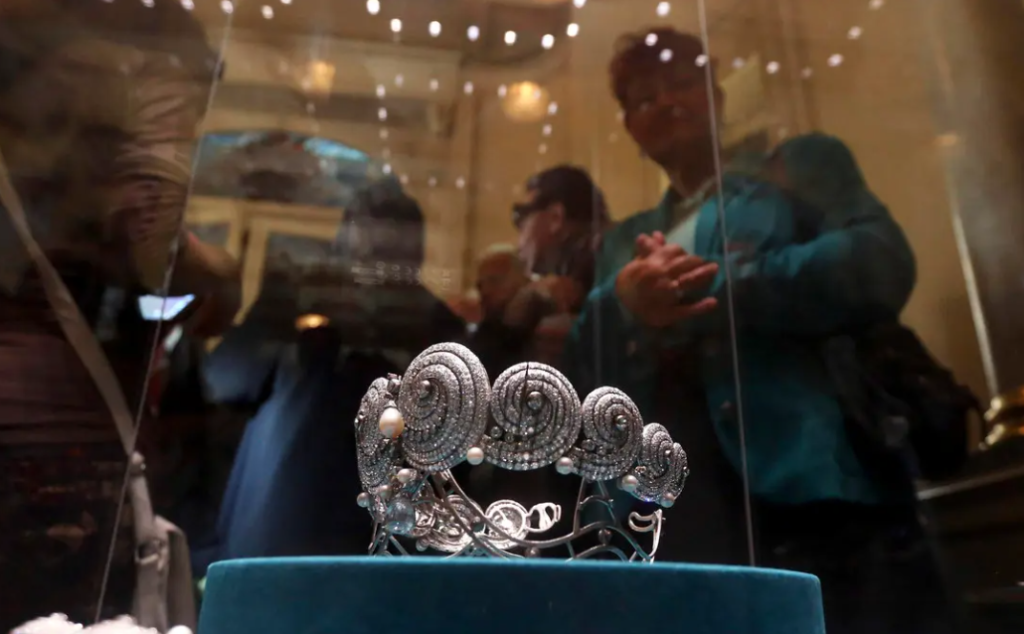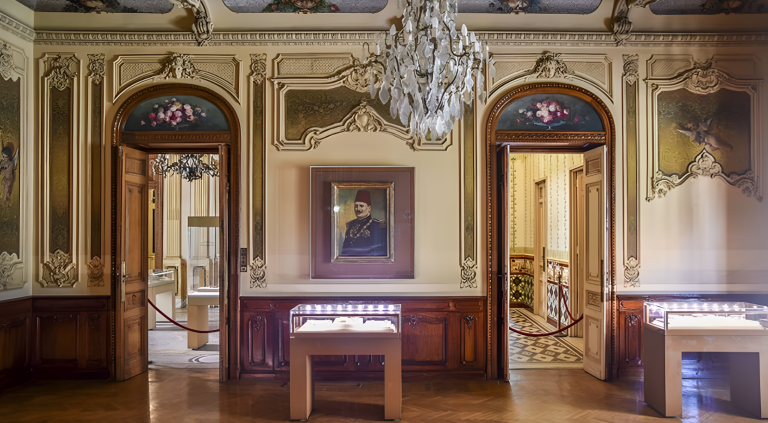The Royal Jewelry Museum in Alexandria, one of Egypt’s most treasured cultural landmarks, is preparing to celebrate its 39th anniversary on Wednesday, October 29th. The museum, once the palace of Princess Fatma Haidar, now showcases nearly a thousand exquisite royal pieces, including tiaras, necklaces, and jeweled artifacts from the Muhammad Ali dynasty. Over the years, it has become a centerpiece of Alexandria’s heritage, drawing visitors eager to explore its blend of royal opulence and architectural beauty.
As it approaches four decades since its opening, the museum stands as a bridge between Egypt’s royal past and its cultural present — but what stories still linger within its marble halls?

A Palace Turned into the Memory of Egypt’s Royal Past
In Alexandria’s upscale Zizinia district, the Royal Jewelry Museum stands as a testament to Egypt’s history of elegance, artistry, and grandeur. The palace housing the museum was originally built in 1919 by Zeinab Fahmy, and later completed by her daughter, Princess Fatma Haider, who lived there for many years before it was transformed into one of Egypt’s most prominent museums.
The palace spans about 4,185 square meters, consisting of two wings—eastern and western—connected by a lavish corridor. Architecturally, it reflects a blend of European classical, Rococo, and Baroque styles.
From Palace to Museum
In 1986, the palace was officially turned into a museum showcasing the treasures of the Mohamed Ali dynasty, which ruled Egypt from 1805 until the Revolution of 1952. Its halls display more than 11,000 artifacts, including jewelry, decorations, and rare medals once owned by Egypt’s kings and princesses.
Among the highlights are Princess Shwikar’s diamond tiara, featuring 2,159 diamonds, and Queen Farida’s floral tiara, crafted from white and yellow diamonds totaling 1,506 stones. The museum also exhibits golden and silver tableware, royal medals, and pieces that reflect the refined taste of Egypt’s former monarchy.

A Palace of Art and Architecture
The building itself is an architectural masterpiece. Its walls are adorned with oil paintings of European landscapes and figures, while its ceilings feature gilded motifs and stained glass that tell stories from the 19th and early 20th centuries.
The museum includes 33 display cases distributed across 13 halls on two floors, each containing royal possessions from members of the Mohamed Ali family — including golden dining sets, ornate timepieces, and personal items belonging to King Fuad I and King Farouk.

A Royal Legacy by the Sea
After decades as a private residence, the palace today stands as a symbol of cultural openness and continuity. The Egyptian Ministry of Tourism and Antiquities lists it among Alexandria’s most important landmarks — a place where European opulence meets Eastern heritage.
The museum offers more than just a display of precious gems; it tells the story of the Mohamed Ali dynasty, which ruled Egypt for over 150 years — a tale of grace, ambition, and transformation. It’s a lasting reminder that when luxury and history intertwine, they become timeless heritage.
WE ALSO SAID THIS: Don’t Miss… A Day in Alexandria’s Historic Antoniades Gardens



